
Rash Evaluations
A rash is an area of irritated skin that is often itchy, red, swollen, or painful. Rashes may also present with blisters or welts. Rashes may result from many different causes whether that be an external environmental factor or internal medical concern. Because it can be very difficult to pinpoint a cause of the rash on your own, it is very important to see a medical dermatology provider for a thorough evaluation and proper treatment plan.
Common Rashes Include:
Atopic Dermatitis (Eczema)
A chronic rash with relapsing and remitting skin changes associated with itching and often dry skin. The skin may heal from time to time, but once it becomes irritated again, a chain reaction of symptoms occur. Some people who have the condition grow out of it; others don’t develop symptoms until later in life.
While the exact cause may be hard to determine, dermatitis is always the result of inflammation, which is an immune response. The skin is triggered by and overreacts to something in the environment such as a plant, clothing, detergent, body wash, makeup, animals, type of food (e.g., gluten), and even touching other people.
Distribution is commonly seen:
- Behind/inside a knee or elbow
- On the neck
- On hands and feet
- On face
Often associated with:
- Personal or family history of eczema
- Asthma
- Allergies
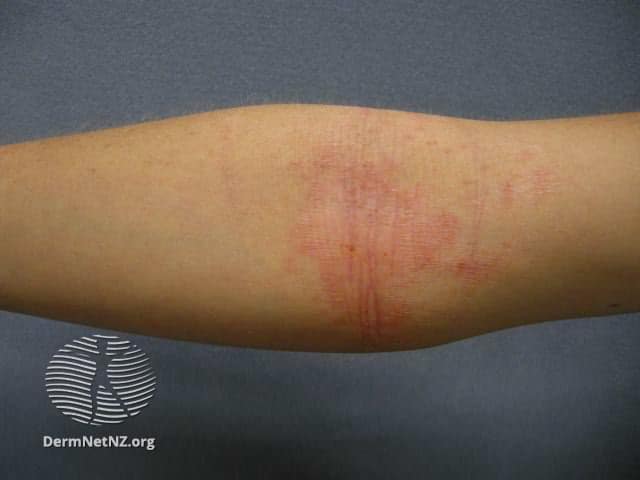
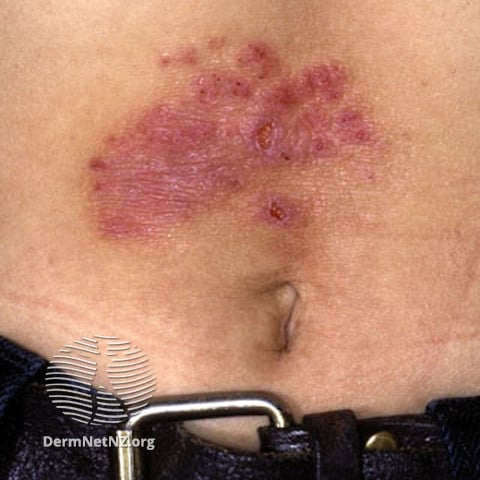
Allergic Contact Dermatitis
An itchy, eczematous reaction localized to the site of contact with a specific allergen.
Common causes of ACD:
- Poison ivy
- Nickel (buttons or earrings)
- Preservatives
- Fragrances
Irritant Contact Dermatitis
A localized, non-immunologically initiated inflammatory reaction caused by environmental irritants such as cold, over-exposure to water, or exposure to chemicals, detergents or solvents.
Strong irritants such as acids and alkalis may cause:
- Redness
- Swelling
- Vesicles or blisters
- Oozing
- In severe cases, necrosis and ulceration
Chronic ICD can be due to repeated exposure to milder irritants (soaps, solvents, cleansers) and may cause:
- Redness
- Thickening of skin
- Scaling
- Fissures and deeper excoriations
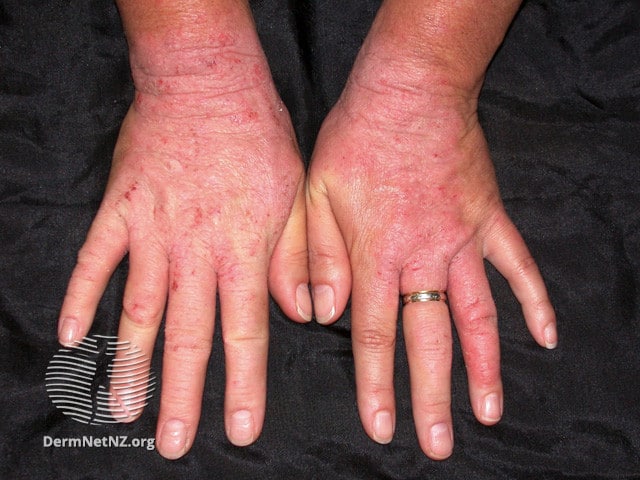
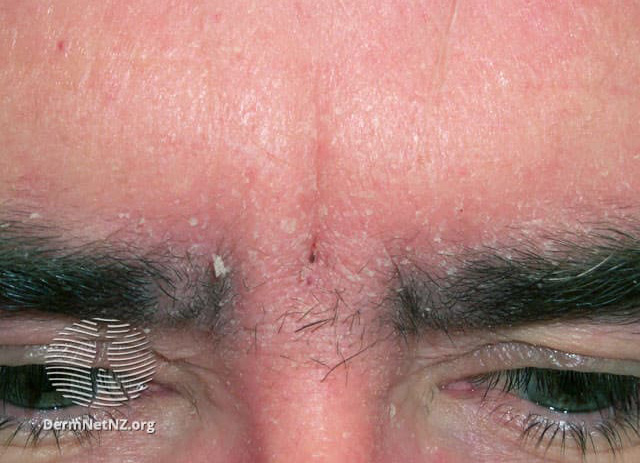
Seborrheic Dermatitis
Seborrheic Dermatitis is another inflammatory rash that is often chronic in nature. It is characterized by greasy yellow scales on inflamed, red skin often located on the scalp or face, and can also be located on central chest and in armpits. It is commonly referred to as dandruff in adults and cradle cap in infants. The yeast Malassezia has been implicated as a contributing factor. Stress and cold, dry weather can exacerbate it.
Treatment for seborrheic dermatitis involves topical creams, foams, liquids or shampoos. There are no oral treatments for dandruff. Antifungal creams or shampoos such as ketoconazole or ciclopirox are commonly prescribed, as well as mild topical steroids for flares.
Psoriasis
Psoriasis is similar to eczema in that it causes itchy, red patches, but those spots may also be silvery scales. Depending on the type of psoriasis, the skin may thicken and harden, form pustules, or develop at creases like those in the armpits or groin. Some people with psoriasis develop a secondary condition called psoriatic arthritis, a painful joint inflammation. Psoriasis is often misdiagnosed because it looks like eczema, especially early on.
Distribution is commonly seen:
- Scalp
- Outside of knees and elbows
- Palms and Feet
While psoriasis is genetic, flare-ups are generally triggered by things like:
- Stress
- Certain medications
- Cold, dry weather
- Infection

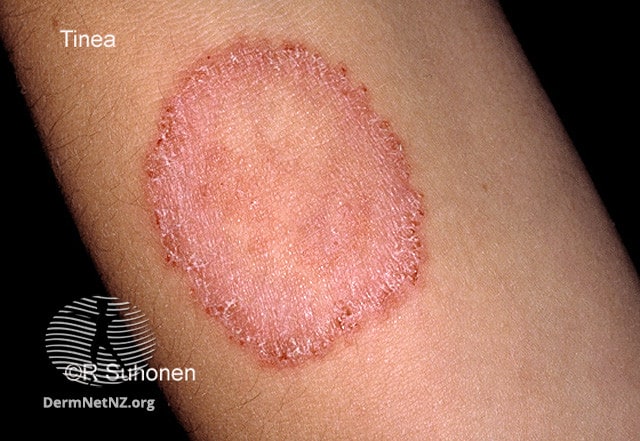
Tinea Corporis (Ringworm)
Circular lesions with pink/redness, scaling, raised margins and central clearing. Transmitted by direct contact with the fungus via infected person, animal, or surface. Typically begins as one smaller plaque that quickly spreads overtime.
Most common forms:
- Tinea Capitus: on the scalp
- Tinea Cruris (Jock Itch): in the groin
- Tinea Pedis (Athlete’s Foot): on the feet and between toes
Exanthem or Morbilliform Rash
Slightly raised and/or flat pink-red eruption of the skin, which can be itchy or asymptomatic. Spots typically range from 2-10 mm, but may be confluent with each other forming larger patches with normal skin between. Most commonly these rashes are a result of a drug reaction but can also be viral or bacterial in nature. These rashes are usually benign but in some circumstances may be the initial presentation of a more serious reaction.
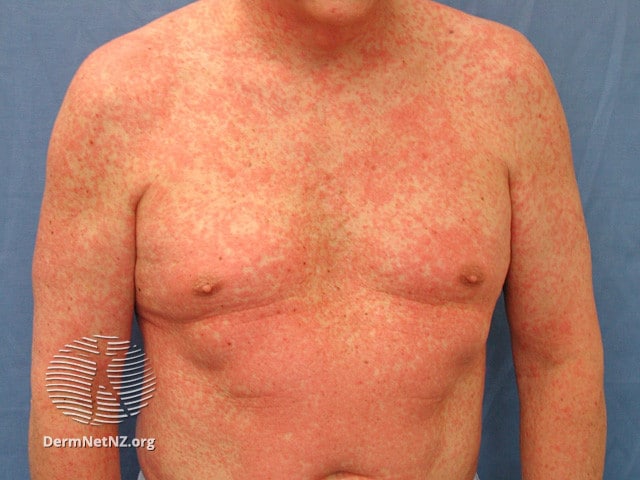
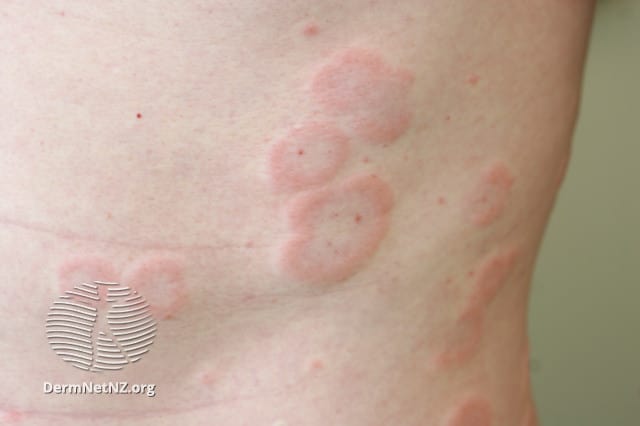
Urticaria (Hives)
Itchy, raised wheals or welts of skin that come and go, moving to different areas of the body. The most common causes of hives are foods, medications, or infections. Hives may precede angioedema and anaphylaxis! It is very important to monitor for swelling of lips, tongue or throat, hoarseness, difficulty breathing or swallowing. If any of these signs develop or if symptoms do not improve, seek immediate medical attention.
Herpes Zoster (Shingles)
A reactivation of the chickenpox virus in the body, causing vesicles and blisters overlying red skin on one side of the body in a localized stripe distribution. Associated with and often preceded by intense pain. After several days the vesicles begin to crust over.
Risk factors include:
- Age 50 or greater
- Increased stress
- Compromised immune system: cancer, HIV, or other chronic diseases
- Serious physical injury
- Taking immunosuppressive drugs including longterm steroid use
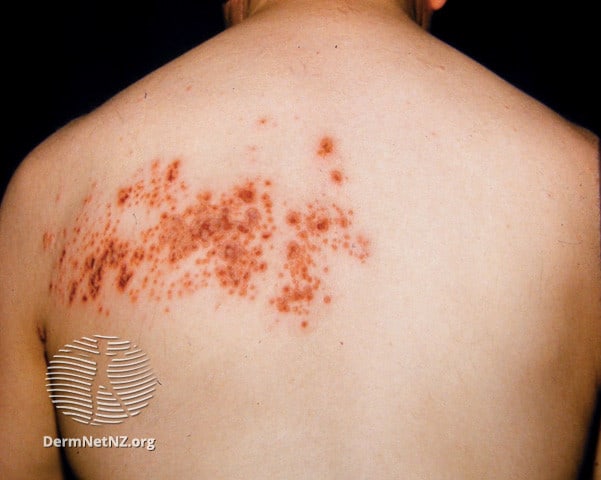
Skin Changes due to Systemic Diseases
- Systemic lupus erythematosus
- Sarcoidosis
- Rheumatoid arthritis
- Acanthosis nigricans
- Neurofibromatosis
At NOVA Plastic Surgery and Dermatology, our experienced Dermatology providers evaluate your rash, perform any diagnostic testing that may be necessary and will recommend the appropriate treatment plan. For some rashes, the goal of treatment is to manage and relieve the symptoms while for others it is to cure completely. If you have any skin concerns, make an appointment to visit us at our office in Ashburn, Virginia.
